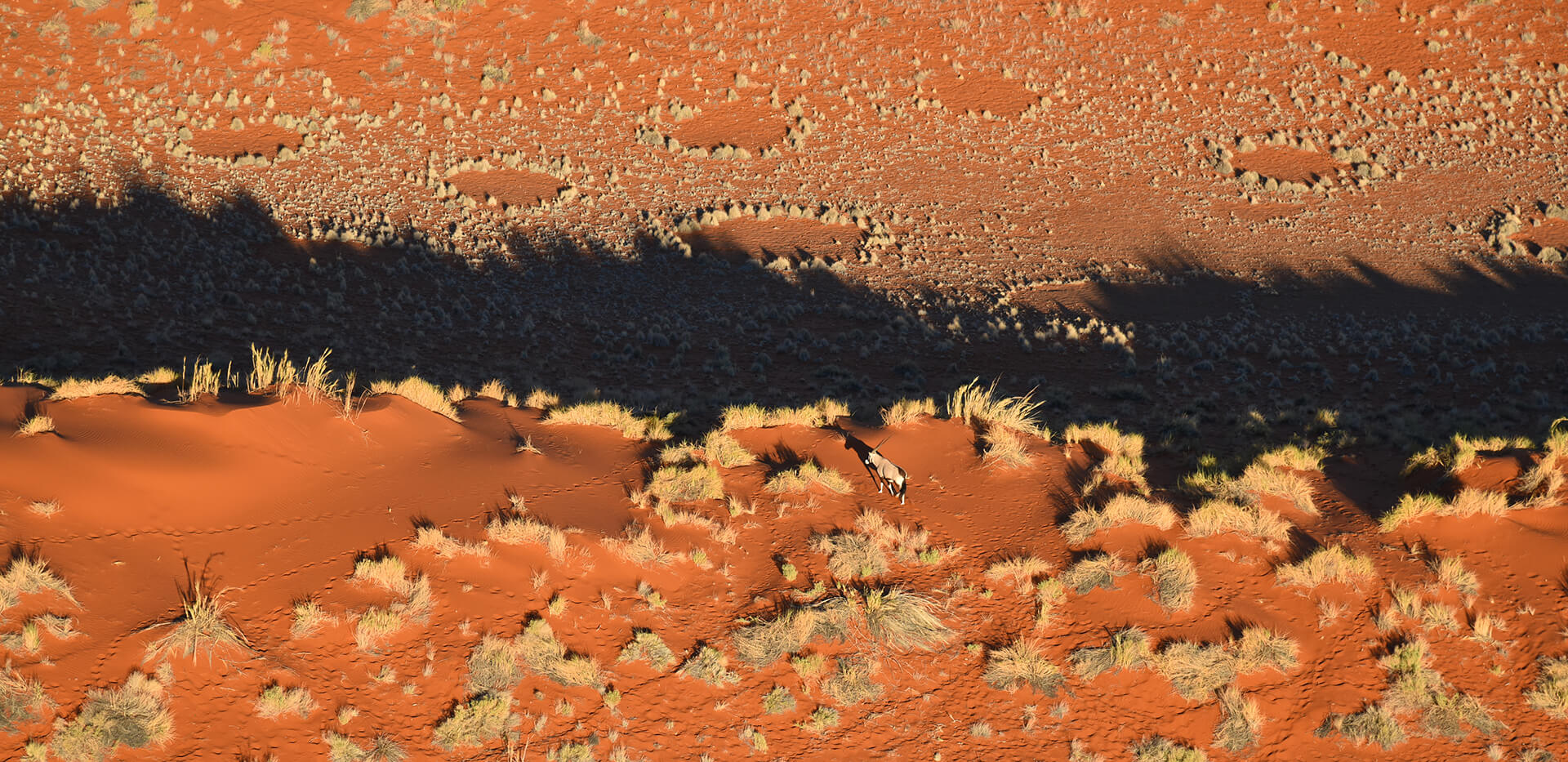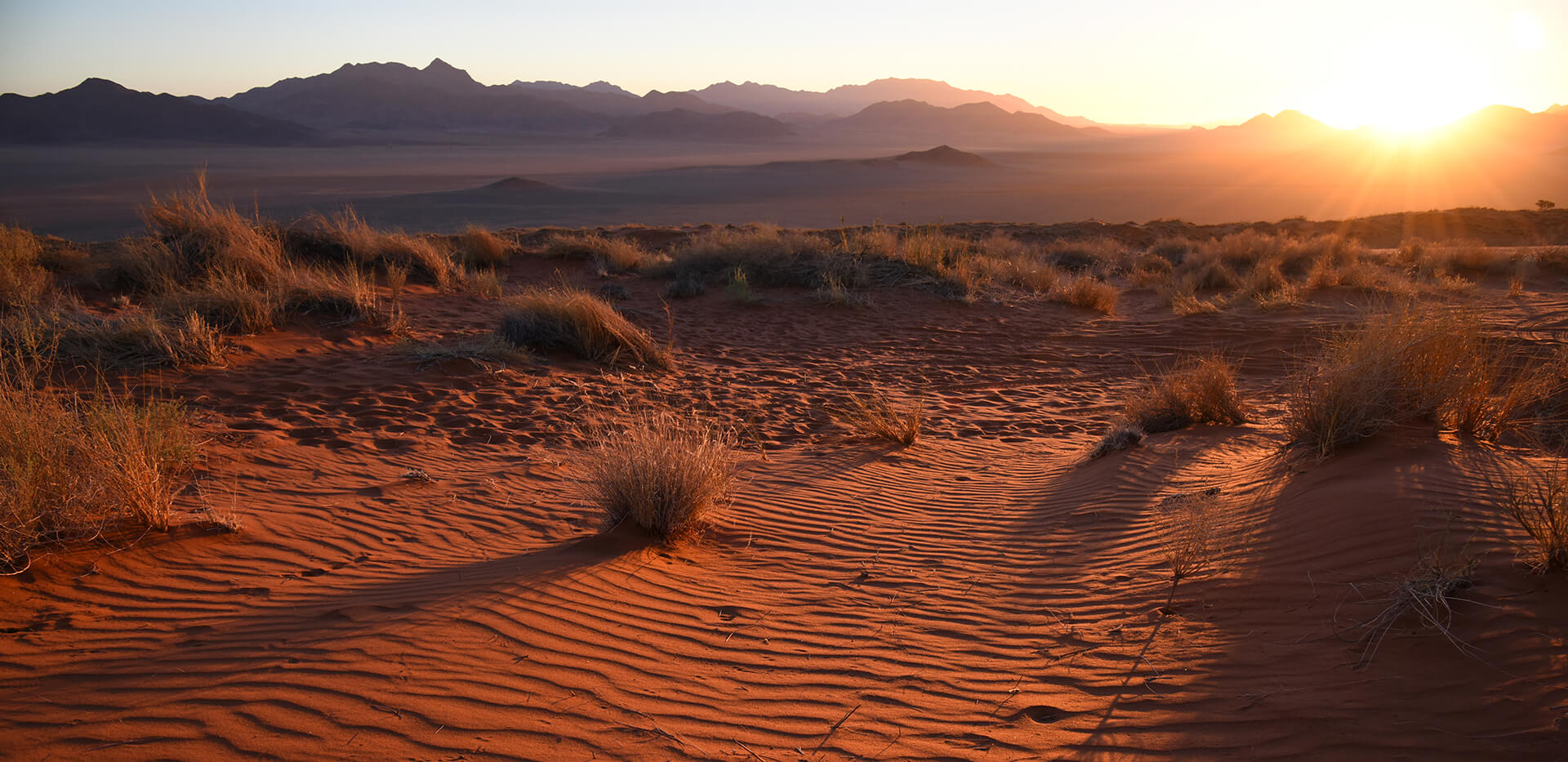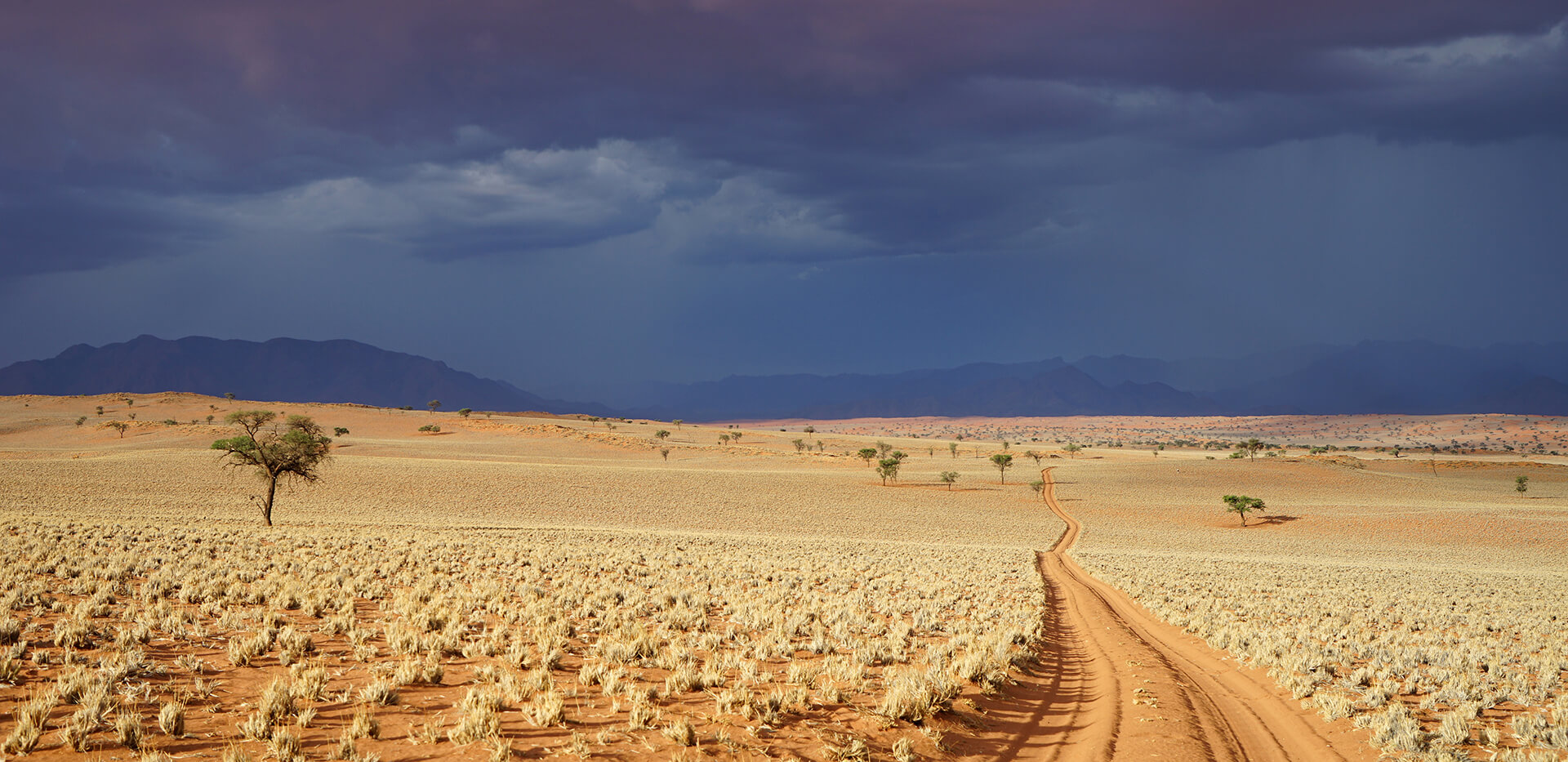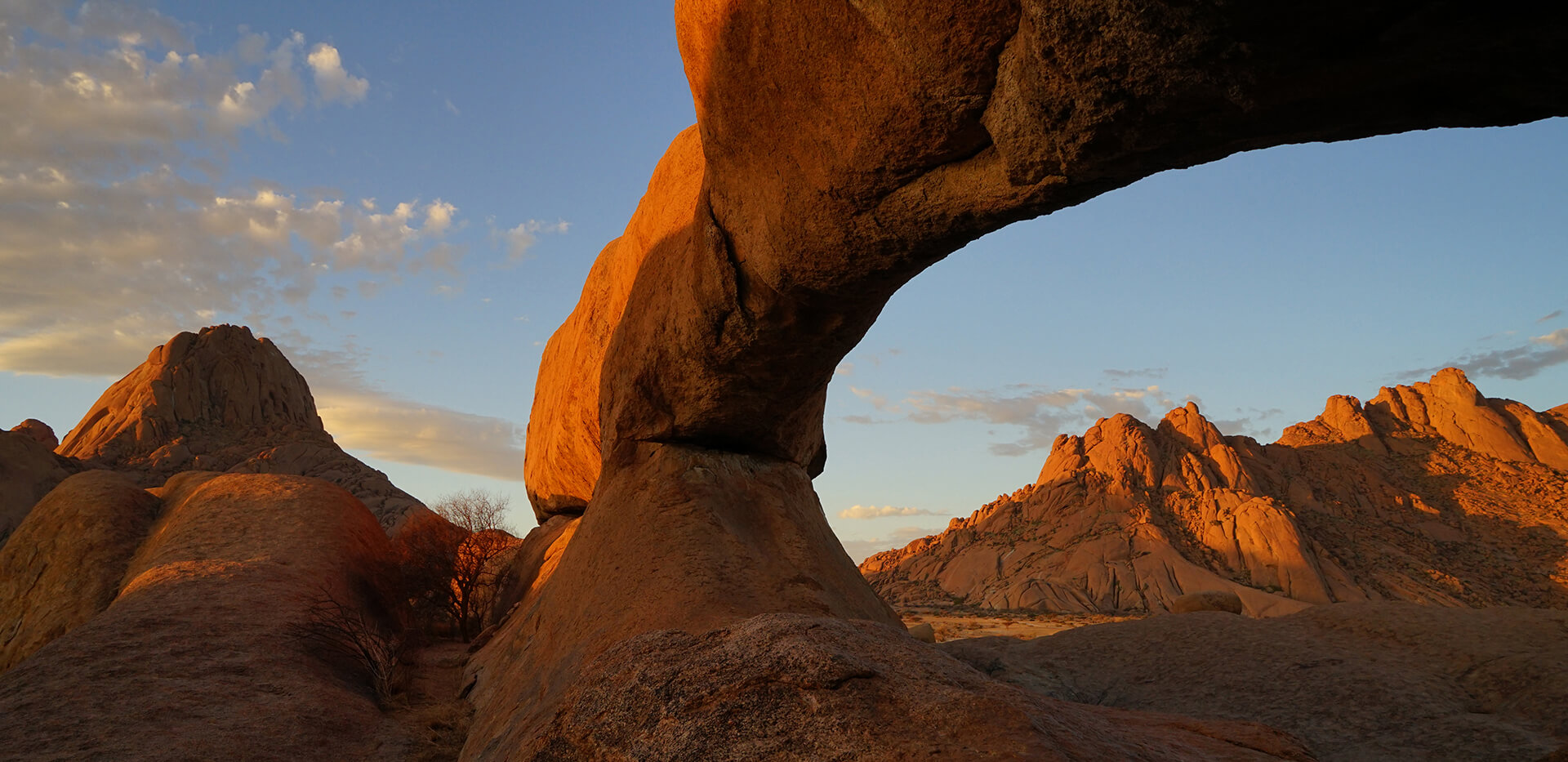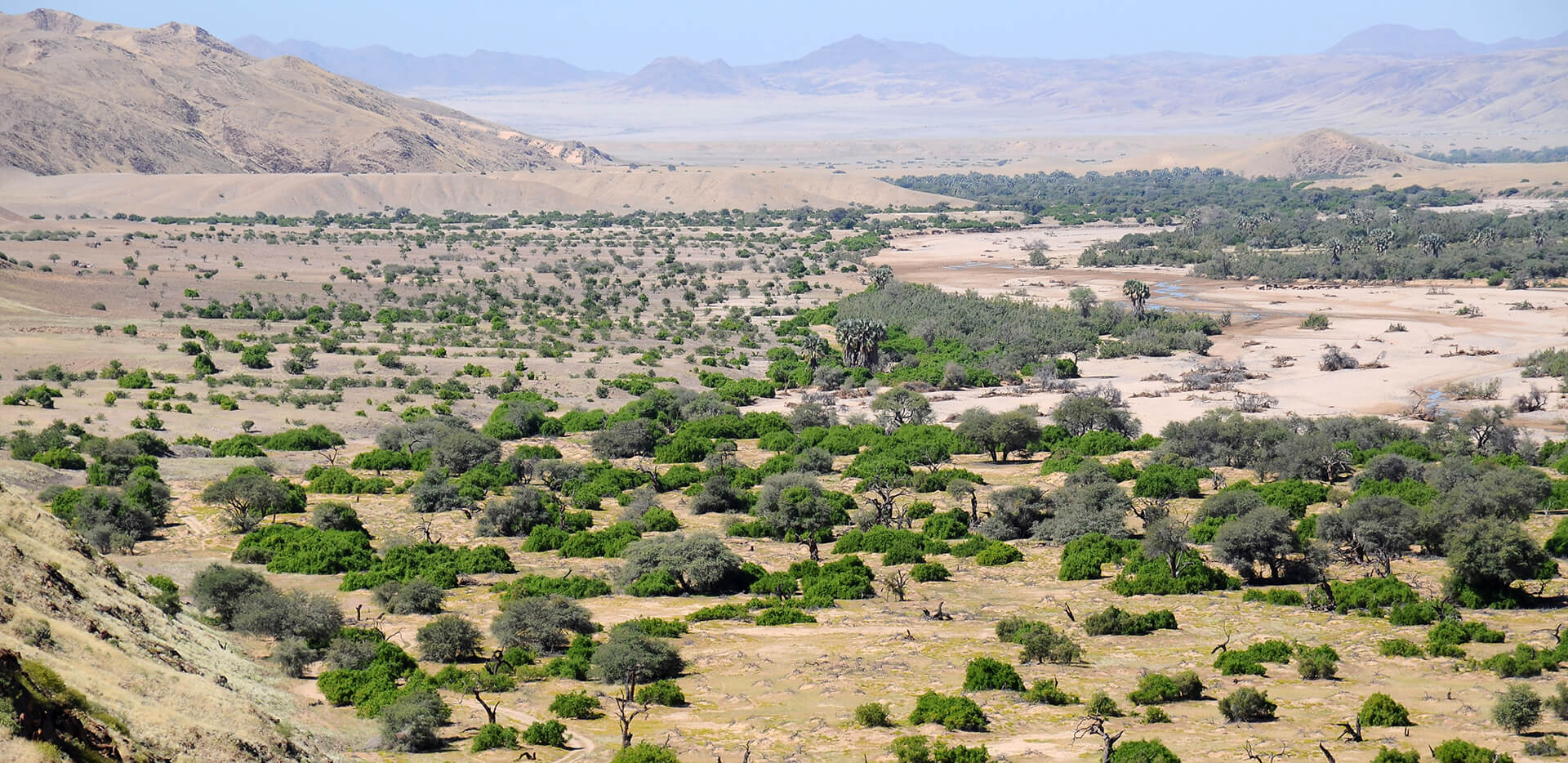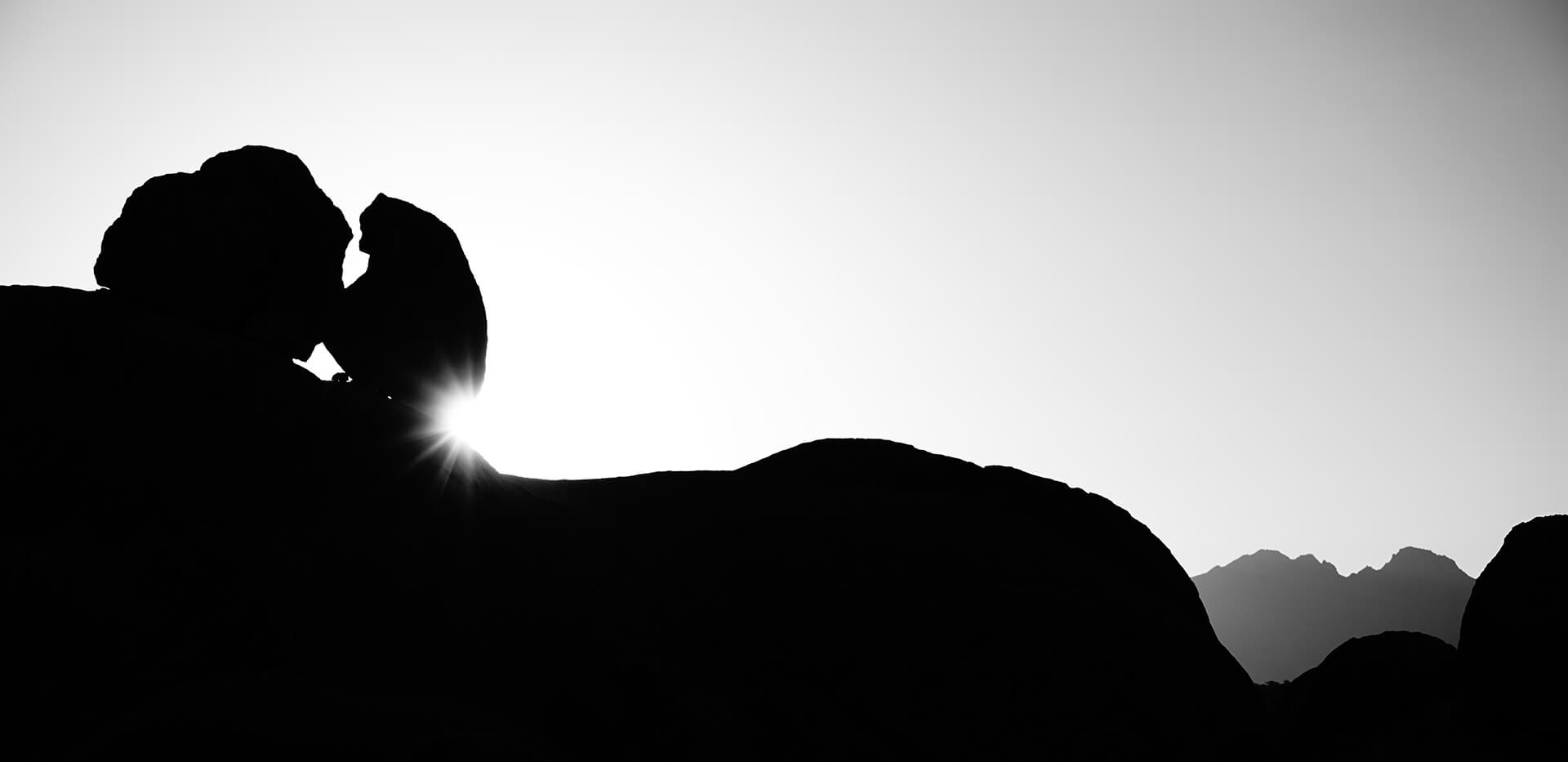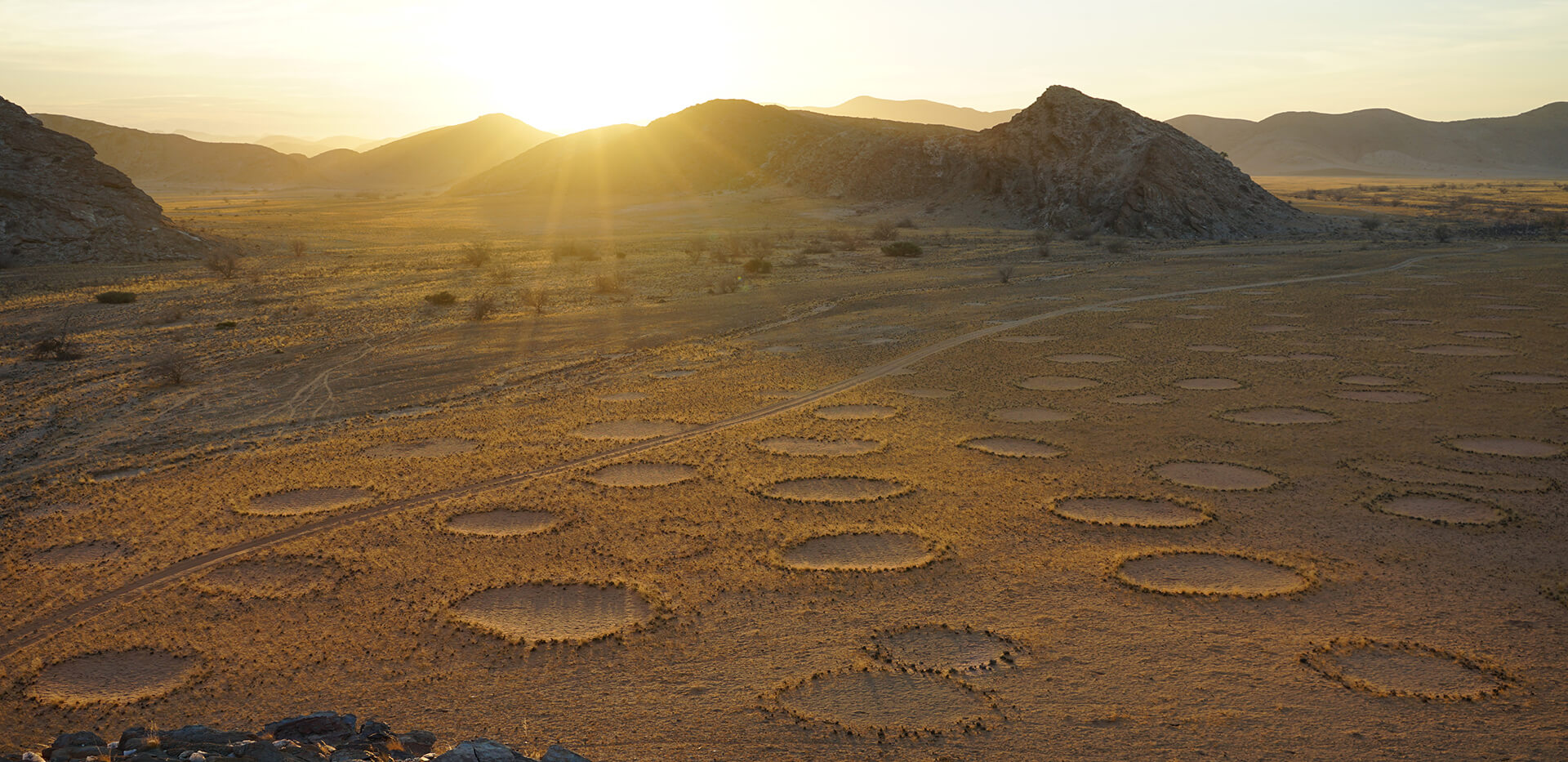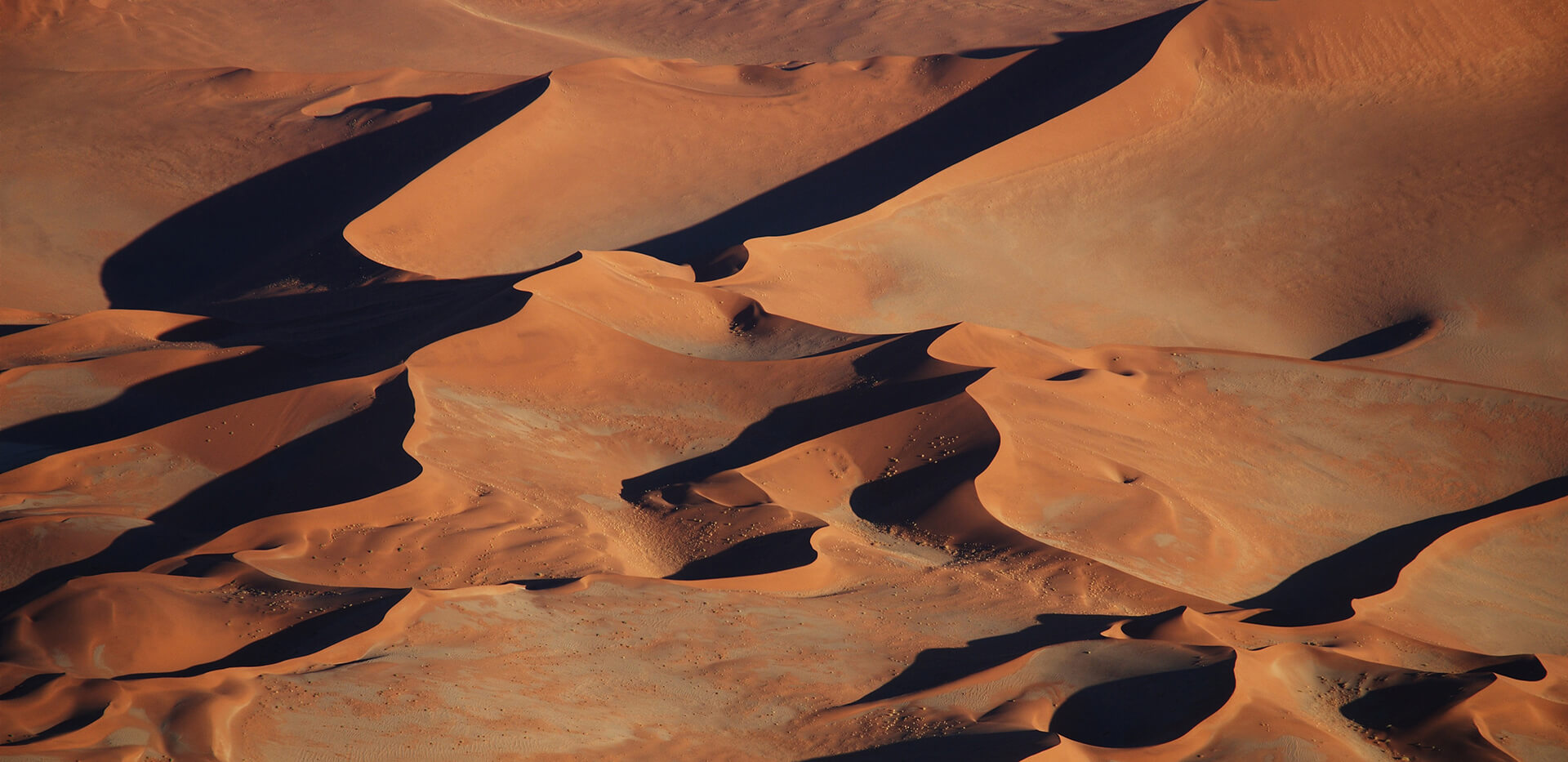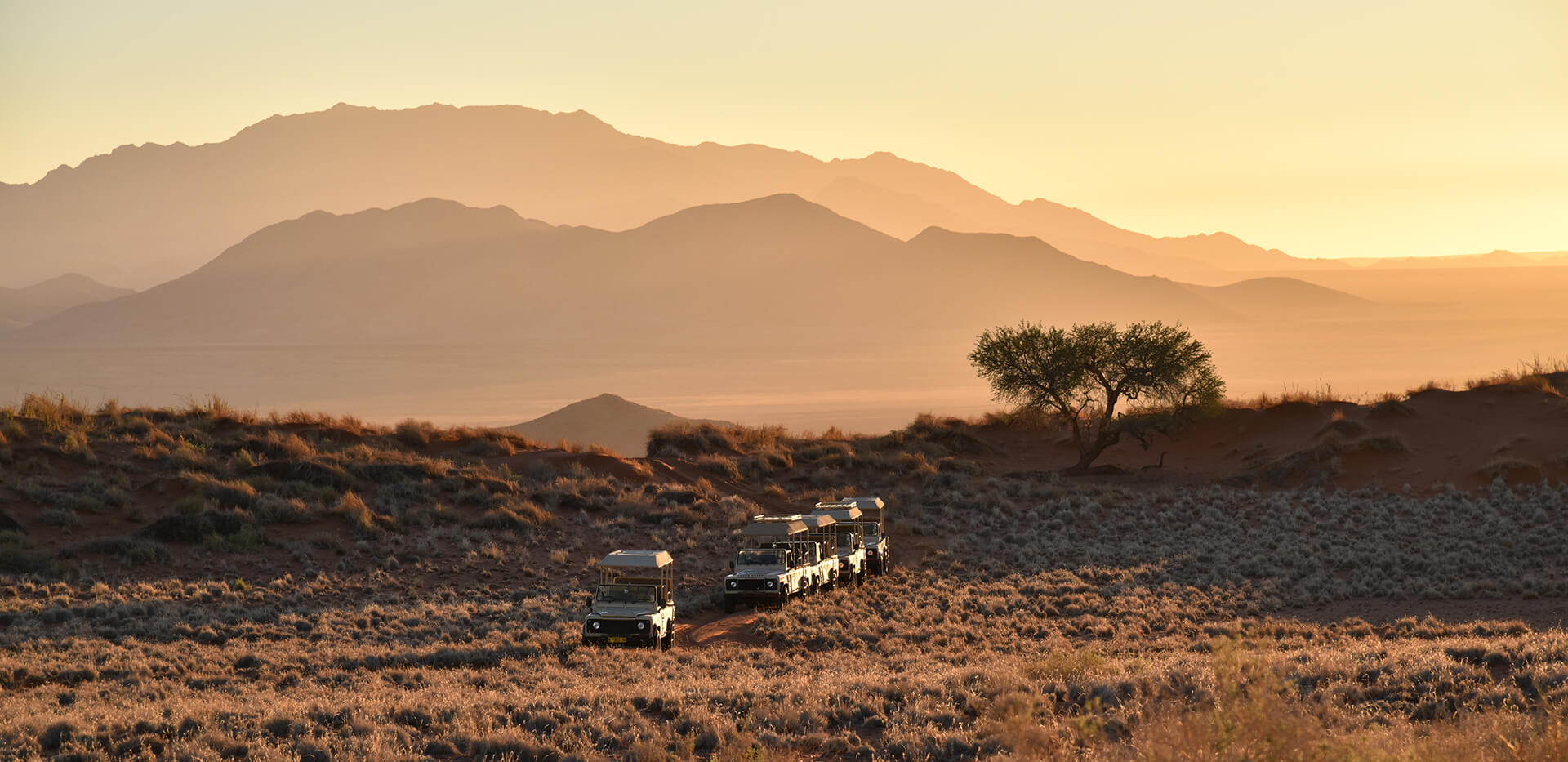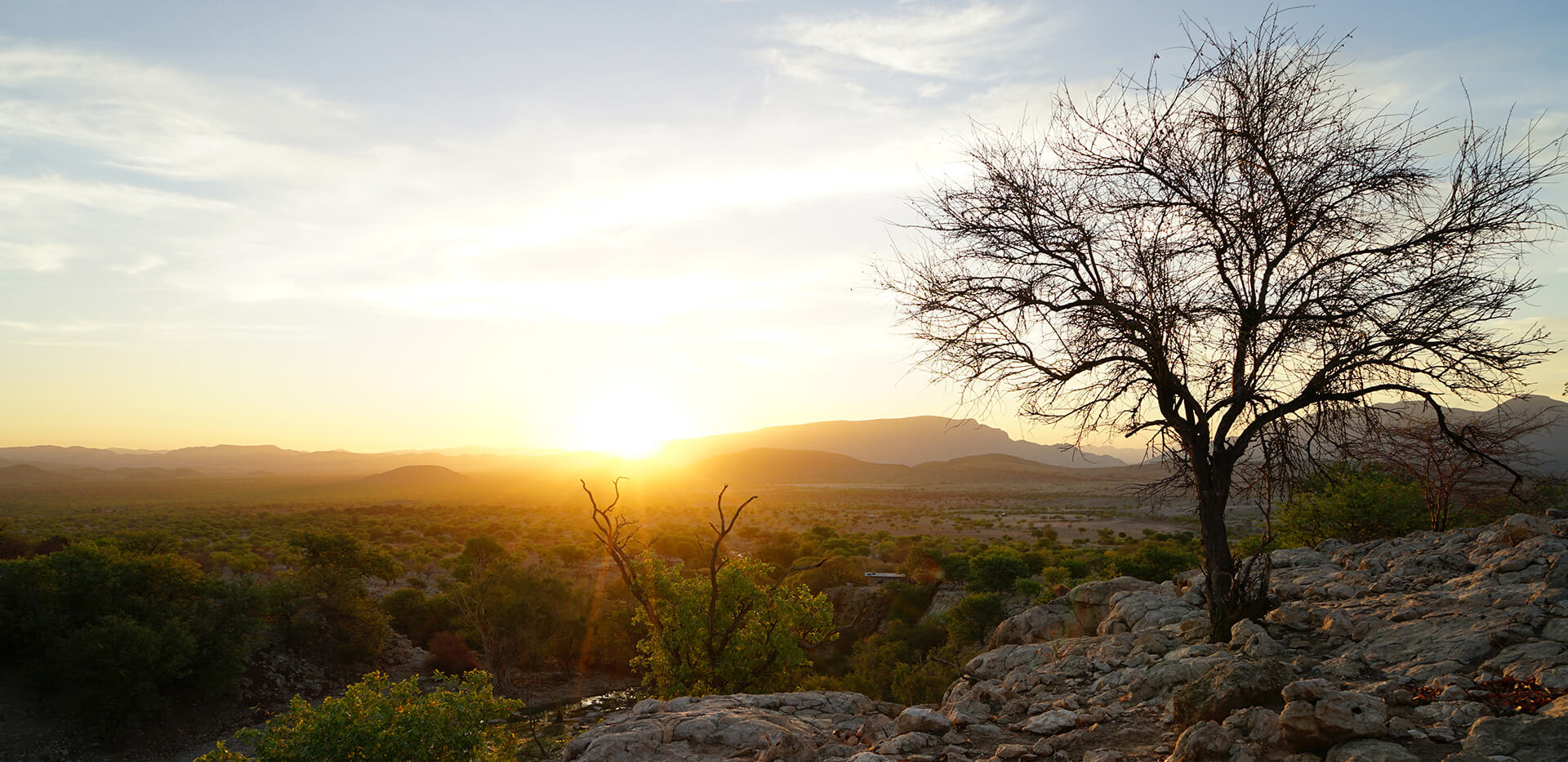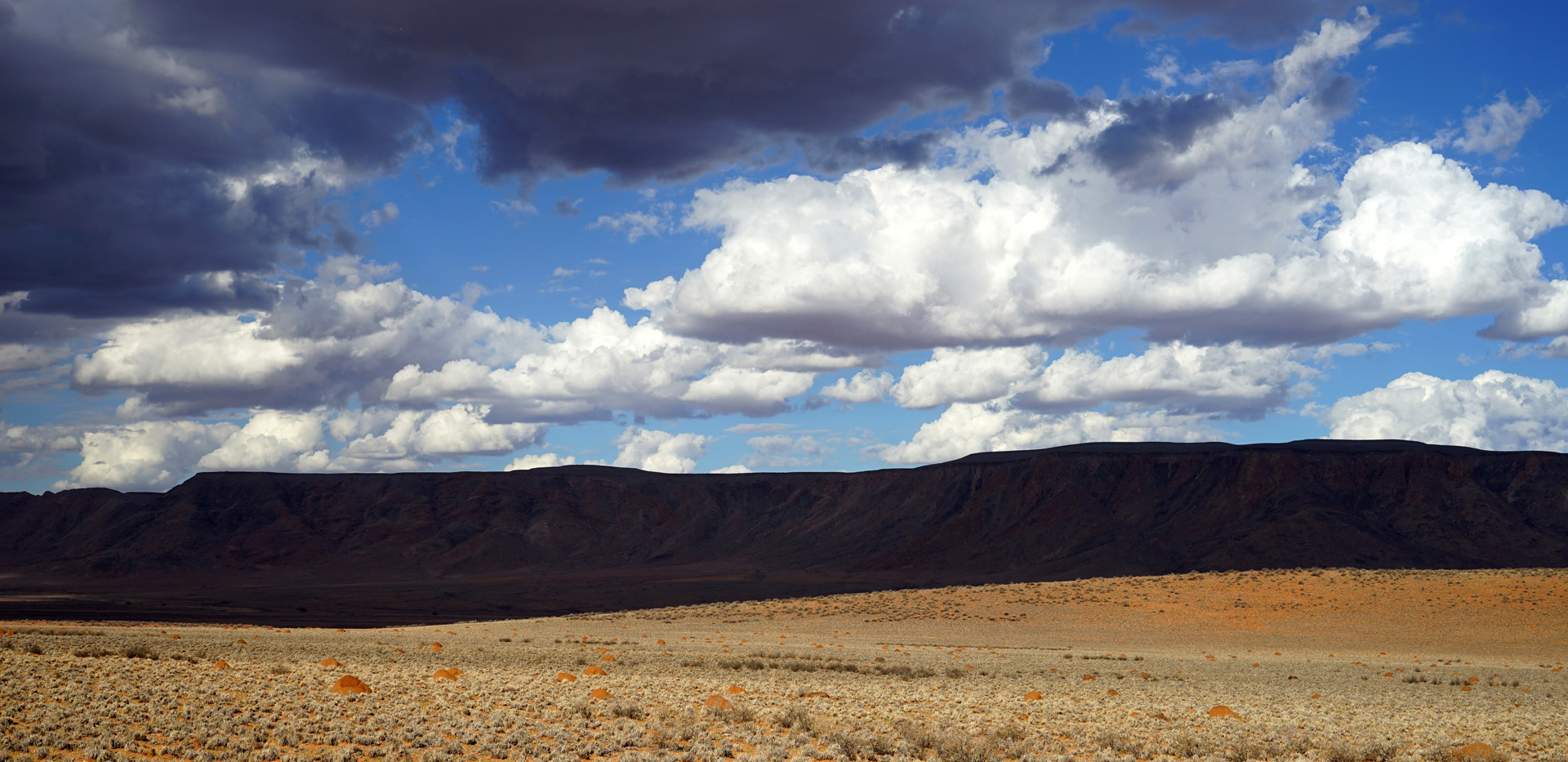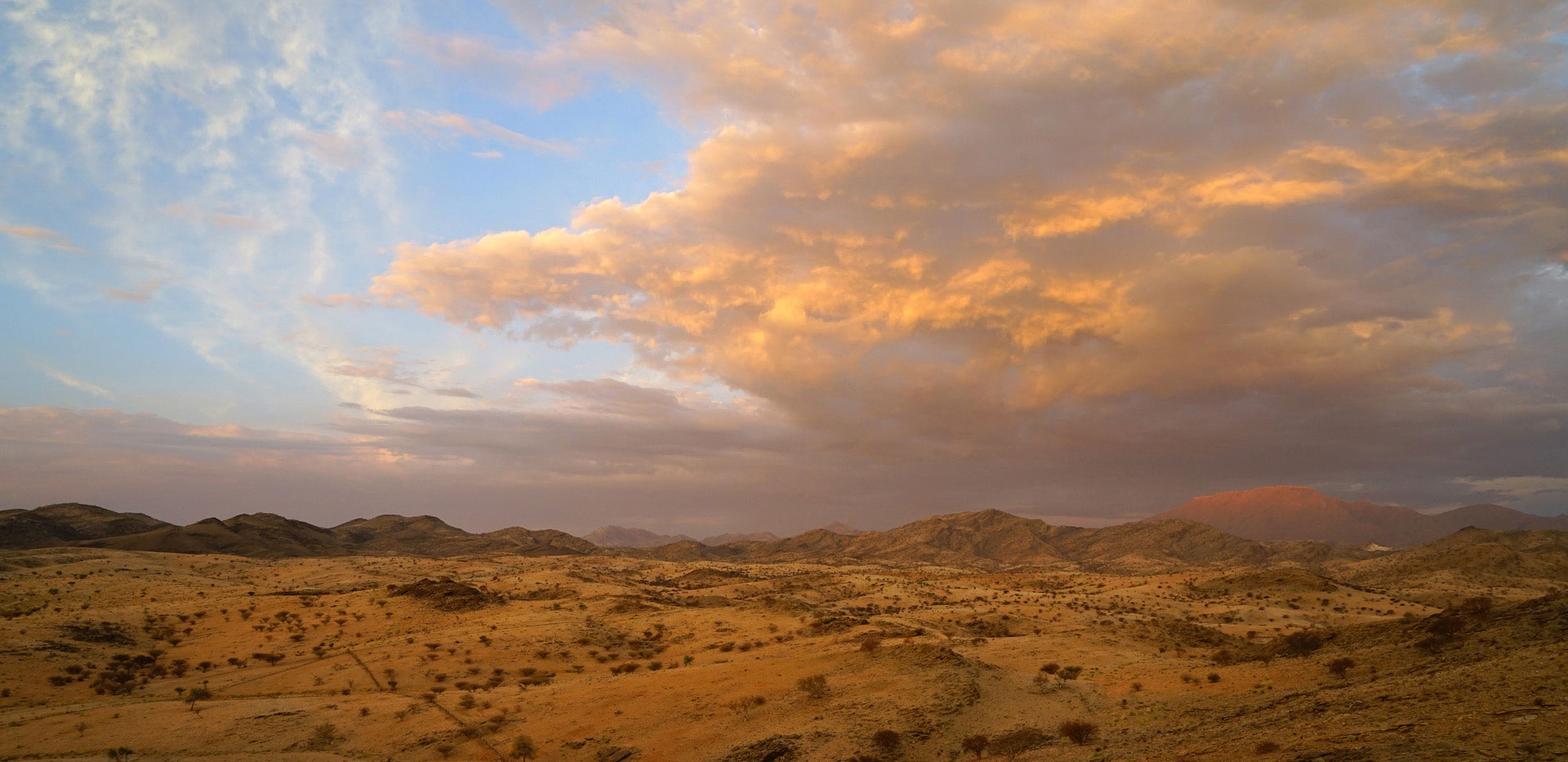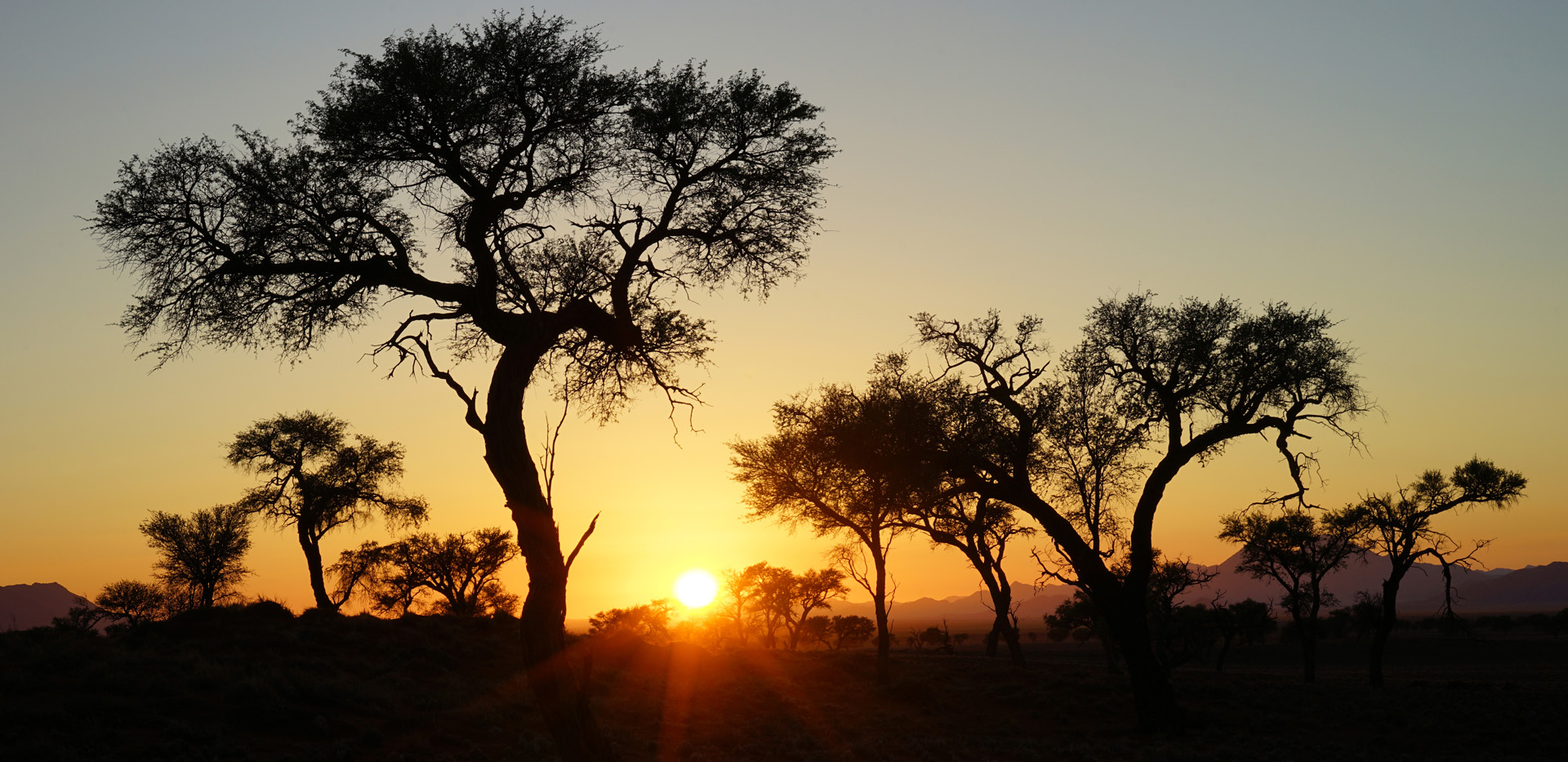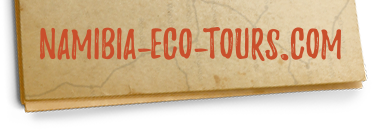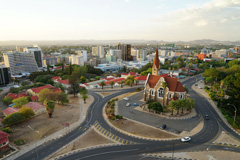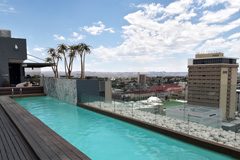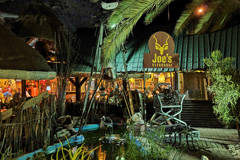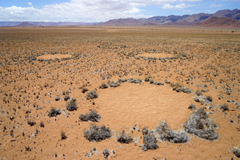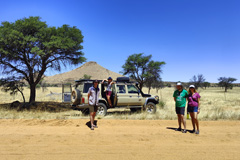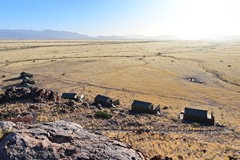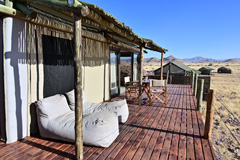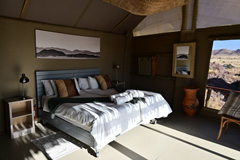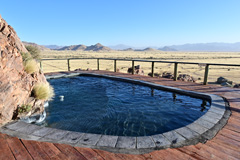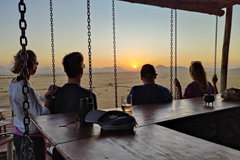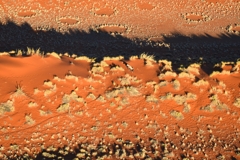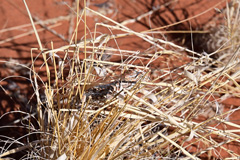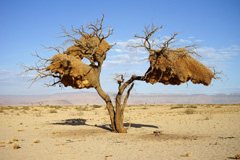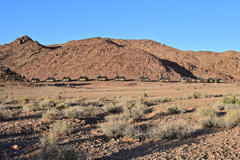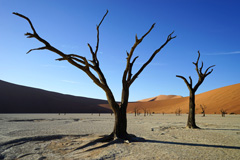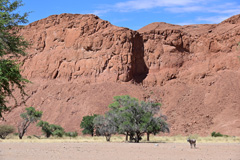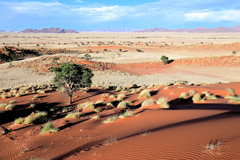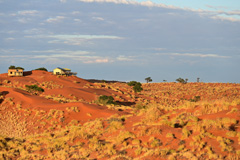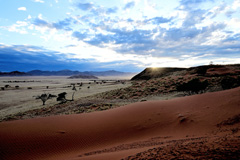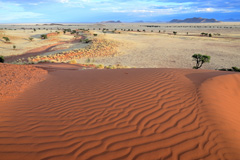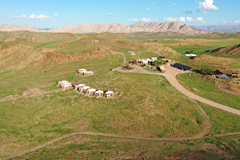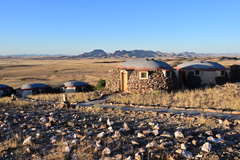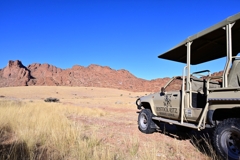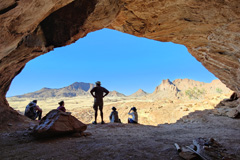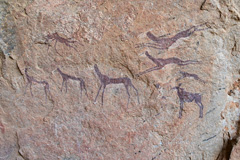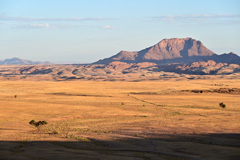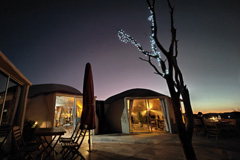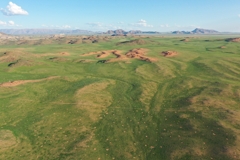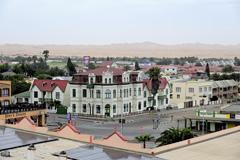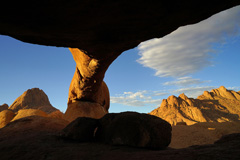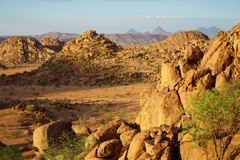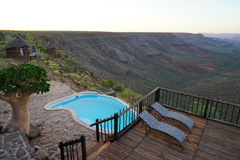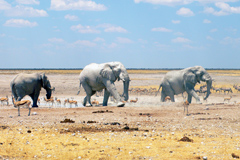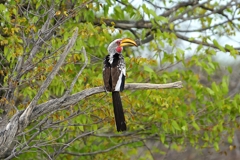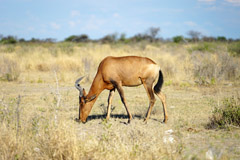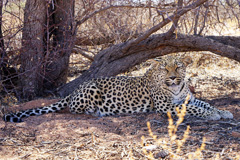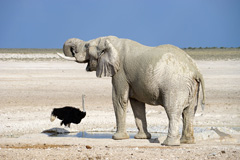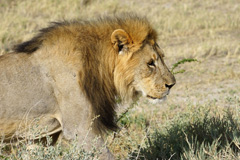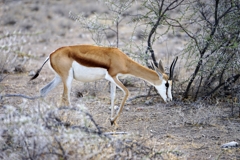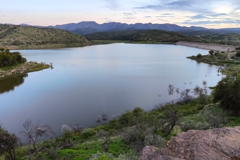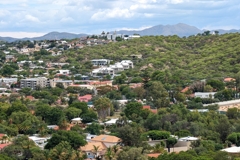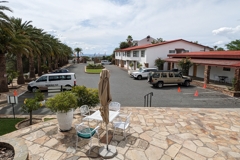Namibia Lodge-Tour | Guided | Group | from Windhoek
Namib-Lodge-Tour
On the tour you will get to know the extraordinary nature of the Namib, the multifaceted ecology of the desert, the mysterious fairy circles and the high sand dunes of Sossusvlei. Experience the Atlantic coast, the wild Damaraland and the wildlife of the Etosha National Park. Here you will find particularly detailed descriptions of the individual days of the tour, as this two-week lodge tour is ideal for getting to know Namibia.
On the day of your arrival you will be transferred from the airport to the hotel and on the day of departure back to the airport. For this round trip, you have the additional possibility to choose a Deluxe-Variant. The Deluxe-Variant includes five overnight stays in highly luxurious accommodations such as the Mowani Mountain Camp, the Hilton Hotel and the 5-star Dune Camp at Wolwedans. This variant has a very similar itinerary and is briefly mentioned at the end of the description of the individual travel days.
-
Day 1
Arrival day in Windhoek
-
At the beginning of your trip, you will be transferred from the airport to the Hotel. Since most flights arrive in Windhoek in the morning, you will have time in the afternoon to get to know the city a little or to buy travel items such as a hat. We will prefer to stay at the remarkable Hotel Thule, which was originally the villa built in 1960 by the factory owner and millionaire Edmund Lafrenz. A suburb that still exists today was named after Lafrenz, the Lafrenz Industrial Area in the north of Windhoek. Should you wish to take a tour of the city, we will at first visit the Independence Memorial Museum which was inaugurated in 2014. The look-out platform of the Panoramic Hall provides a magnificent view over Windhoek and its surrounding landscape. Here is the best location to explain the dynamic development that Windhoek has gone through since its independence in 1990. According to an official census, Windhoek’s population has risen alone between 2001 and 2011 from over 233 000 to over 325 000 inhabitants. A census from 2023 already revealed a population of over 486 000. I have known Windhoek since 1996 and studied there from 1997 to 2000. The socio-cultural and urban development changes that Windhoek has undergone since then are remarkable. Especially during the past twenty years, new buildings have been built at many locations and have thereby changed the town picture. The current townscape consists thus of small old buildings from German colonial times around 1900 and modern fronts from the recent past. Our city continues via the Christus church and down to the Independence Avenue and Post Street Mall with its many stores, restaurants and gift shops. The first evening in Windhoek we will end in the legendary Joe’s Beerhouse where you get delicious and Namibian authentic barbecue food. Since 1991, Joe’s is THE address for visitors of the country and there is an un-official saying “You have not been to Namibia if you have not been to Joe’s”.
Included services: Airport transfer, accommodation
Deluxe-Variant
Instead of staying the first night at the Hotel Thule, you will overnight at the 5-star Hilton Hotel. The hotel is located in the city center and offers a beautiful view over Windhoek from the roof terrace.
Included services: Airport transfer, accommodation
-
Day 2
Windhoek - Pro-Namib Desert
-
On the second day of our round trip, we are driving from Windhoek towards southwest into the so-called Pro-Namib Desert. The day trip will be about 300 km long and we will cross the Khomas Highland plateau with its numerous commercial cattle farms. This farming region in the highlands benefits quite well from annual rainfall caused by orographic uplifts along the mountains. The warm rising air is forced upwards and its condensation results in around 350 mm annual precipitation which, however, is declining westwards to below 30 mm in the Namib Desert. Since Namibia receives its moist air and thus rainfall primarily from the north-east of the country, a drive westwards towards the Namib is thus always an increasing experience of the arid desert environment. Hence, during the day trip you will recognize how tree cover and vegetation in general are declining and that live conditions become harsher. The special charm of drylands is the perception how men, animals and plants have to cope with increasing water stress in order to survive. Often, this fascination about desert environments emerges only at second glance – I will be happy to support you in getting this view quickly. CIn the afternoon, we reach the D854 gravel road (Afrkaans: pad) on the Tsauchab River. After B- and C-roads, D-roads are the smallest official “pads” in Namibia and almost always consist of gravel. The Tsauchab River Camp is also located on this D854. We can have a coffee or a refreshing milkshake there. The owner of the camp, Johan Steyn, is a passionate iron artist and collector of various tools and utensils. The entrance area of the camp is surrounded by countless metal figures, where you can gaze in amazement or amusement. After this stop, we continue downhill to our destination, the Elegant Desert Eco Camp, which we will reach after half an hour. The camp is located behind the Great Escarpment in the middle of the vast Pro-Namib Desert. The Pro-Namib is an area adjacent to the extremely dry Namib Desert, which forms a transition zone between dwarf shrub savannah and desert. It rains here at irregular intervals around 100 mm per year, so that a layer of green grass forms at recurring intervals, in which we also find the mysterious fairy circles. Once you arrive at our camp, you can relax in the beautifully situated pool or watch the sunset from the high bar. At night, the beds can be pushed out onto the veranda. A night under the clear starry sky is an unforgettable experience.
Included services: Accommodation, breakfast, dinner
Deluxe-Variant
On day 2 we will directly drive to the NamibRand Nature Reserve and Wolwedans.
Included services: Accommodation, breakfast, dinner, park fees
-
Day 3
Pro-Namib Desert
-
Today you will get to know the fairy circles in detail. Fairy circles begin to form in Namibia below the 150 mm rainfall isohyet, thus in the vast plains directly behind the Great Escarpment, where we spend the night. From now on we will see them more and more frequently on our way towards the west. However, the first fairy circles that form just after the C19 road are already very interesting, as they are located on the edge of the geographical boundaries within which they occur. Over a distance of only a few kilometers, you first find isolated circles at large distances, but then suddenly more and more. Thus, we will stop already there and I will explain to you the phenomenon of the fairy circles right at the site. In the early afternoon, we will reach the NamibRand Nature Reserve (NRNR). With over 200 000 hectares, the reserve is one of the largest private nature reserves on the African continent. NamibRand can be considered as an important core area of fairy circle research because, contrary to all other regions such as the remote Kaokoveld in the north-west of the country, it is quite easily accessible. Its suitable infrastructure has thus favored in the past in-situ research on fairy circles. Moreover, the area receives a mean annual precipitation of around 70 to 100 mm, which are ideal conditions for numerous fairy circles to thrive. I will then explain to you all details on fairy circles and will respond extensively to your questions. A number of information on research you can already access on this webpage in the rubric on fairy circles or on my special webpage www.fairy-circles.info. However, the fairy circle mystery is best explained at the site during that day. On our journey you will gain deeper insights into the ecology of the fairy circles' habitat. How is the sparse annual rainfall distributed in space at the site and temporally over the year or decade? How do the annual and perennial grasses cope with this water shortage? In how far are the fairy circles spatially connected via the below-ground distribution of soil water? Why do the fairy circles exhibit such strictly ordered distances in-between each other and why are they circular? Which influence does have wind on the shape of fairy circles and how quickly do new circles emerge or do old circles disappear again? What has been found in the soil so far and which of the existing causal hypotheses is the most likely one? All these questions can be answered in detail on this day or can be discussed. You are most welcome to contribute with speculations and your own new ideas. Due to my long-term research activities on the subject of fairy circles, which started with our first publication in the year 2000, I will be able to share with you the latest state of knowledge on the topic. On our day tour we will also see various antelopes such as springbok and oryx, as well as zebras and ostriches. In the evening we will be back at Elegant Desert Eco Camp and review the events of the day over dinner.
Included services: Accommodation, breakfast, dinner, game drive in 4WD, park fees
Deluxe-Variant
As we are staying two nights at the luxurious Dune Camp at Wolwedans, we will be there in the morning and will also spend the evening in the NamibRand Nature Reserve. Here we will end the day with a sundowner on a beautifully situated viewing platform.
Included services: Accommodation, breakfast, lunch, dinner, game drive in 4WD, park fees
-
Day 4
Pro-Namib Desert - Sossusvlei
-
At sunrise, you will have the opportunity for a unique balloon drive with Namib Sky Balloon Safaris. The views during early morning light over the Namib’s endless red dune landscape are gorgeous. You will not only spot the fairy circles from the bird’s-eye perspective but you may also see other inhabitants of the dunes such as oryx, zebra and springbok. In case you prefer to start the day without optional balloon ride but with a leisurely breakfast, you can relax in the morning and wander around the camp on hiking trails and look out for unique photo opportunities. Afterwards, we will head towards Sesriem in the Sossusvlei area where we will reach the Sossus Dune Lodge around noon. Here, you will enjoy your lunch, find your accommodation and have a rest. In the afternoon, we will visit the Sesriem-Canyon which is situated nearby the lodge and provides cool shade from the sun. Over the last two million years, this up to 30 m deep canyon was eroded by the ephemeral Tsauchab River which flows 50 km westwards into the Sossusvlei. The canyon does have a permanent spot containing water which is used by animals – otherwise, the river only flows during the rainy season. If the river is flowing, we will walk to the point where the Tsauchab plunges into the deep canyon. Even a swim in the river is possible if there is enough water. After the canyon, we will pass the small village Sesriem and drive to the Elim Dune within the Namib-Naukluft National Park. This dune is easy to climb and offers at various heights a range of different viewing points. Here, you will also find beautiful photo motifs of the wave-like dune sand and Stipagrostis grasses. Even fairy circles you may see from the Elim Dune, however, under the prevailing arid conditions of just about 70 mm annual precipitation, the circles are only sparsely distributed. The dune is also ideal for a sundowner before we drive back for dinner to the Sossus Dune Lodge.
Included services: Accommodation, breakfast, dinner, park fees (The balloon drive is optional and not included in the price.)
Deluxe-Variant
This day is identical to the descriptions above except for the morning departure from the accommodation. After breakfast, you can either take a relaxing stroll around the Dune Camp, where you can take some lovely photos of undulating sand formations and grasses moving in the wind, or take an optional hot air balloon ride.
Included services: Accommodation, breakfast, dinner, park fees (The balloon drive is optional and not included in the price.)
-
Day 5
Sossusvlei - Tsondab Valley
-
The Sossus Dune Lodge is located exclusively within the borders of the Namib-Naukluft National Park. In contrast to all other accommodations, we are therefore not dependent on the evening and morning closing times of the park gate and have more freedom. Hence we can drive to the famous Dune 45 in the early morning before sunrise. You will enjoy this fantastic highlight of the tour in the best light of the first rays of the sun. The dune is located 45 km from the entrance gate and offers a wonderful view over the whole valley of the Tsauchab River. But even if you don’t want to go up to the 85 m high top of the dune, there are beautiful photo motives of red shining sand and the individual gnarled trees around the dunes. The fine sand, which invites you to walk barefoot, is about 2 million years old. The petrified layer of sand underneath, also known as Tsondab sandstone, is even 12 to 20 million years old. This makes the Namib one of the oldest deserts in the world. After the Dune 45 we drive on to Deadvlei, 20 km west, which is another highlight of the tour. Before the Deadvlei, the Tsauchab River finally sands up in the Sossusvlei, although it reached once a long geological time ago the Atlantic Ocean. Even today the Tsauchab still flows underground along old flow paths to the Atlantic Ocean, where fresh water outlets can be found at the coast near Meob Bay. Also the Deadvlei was originally fed with water from the Tsauchab River until 500 to 600 years ago, when the climate changed, the water table dropped and new insurmountable dune elevations separated the Deadvlei from the Sossusvlei. The once many camel thorn trees could not be supplied with enough water anymore and since then the trees are preserved by the dry heat and are standing like statues in the vlei. The white clay pan, the almost black burned dead trees, the red shimmering sand of the dunes and the deep blue sky offer you unique photo scenes that will make your journey unforgettable. In the background of Deadvlei there is “Big Daddy” with a height of 325 m, which is the highest dune in Sossusvlei. After our tour to Sossusvlei we head back to the lodge, where we will also see a few isolated fairy circles along the way. In the afternoon we slowly head north to the Namib Dune Star Camp. Here we will be able to relax in the lodge below until a shuttle takes us up to the camp on the dunes. Especially near the lodge you can see the up to 20 million years old Tsondab sandstone. In the late afternoon, spectacular views of the Namib's scenic diversity and into the wide Tsondab Valley are offered from the elevated location of the Dune Star Camp. The Tsondab Valley is very similar to the more southerly Sossusvlei. Here, too, the Tsondab River silts up 50 km further west in a vlei in front of high sand dunes. The area is a part of the Namib-Naukluft National Park that is not open to the public and only researchers and conservation officers are allowed to visit it. Due to my research on fairy circles and other plant rings, I have visited the Tsondab Valley several times in recent years. I would be happy to tell you about this special place in the Namib. But even just the view of the Tsondab Valley from Dune Star Camp is something very special! The camp is located in the middle of the dunes, so you get a particularly authentic desert experience here. Dinner on the veranda is guaranteed to be a unique experience.
Included services: Accommodation, breakfast, transfer to Sossusvlei in 4WD, park fees
Deluxe-Variant
No deviations – this day is identical to the above descriptions.
Included services: Accommodation, breakfast, transfer to Sossusvlei in 4WD, park fees
-
Day 6
Tsondab Valley - Rostock Ritz
-
In the morning you can take short walks through the dunes around the Dune Star Camp. The sand is then still pleasantly cool, so you can also walk barefoot. In the morning light the landscape with its sand patterns, grasses and individual trees comes into its own. You will then be taken down to the lodge. Then we drive north to the Rostock Ritz Desert Lodge. On the way we will stop in Solitaire, which is famous for its decorative vintage cars at the entrance to the petrol station. There is also a small shop and a bakery where you can buy cool drinks or the famous apple pie. After noon we will reach Rostock Ritz. Now you can lie comfortably at the pool and relax before we do a small excursion in the afternoon with the 4WD car. Here you will get to know the fascinating landscape around Rostock Ritz, you will see 2000 years old rock paintings and you will enjoy a sundowner drink with the best view of the surroundings. Dinner at the lodge is superb and you can end the day with an excellent à la carte menu. By the way, the name of the farm Rostock has nothing to do with the coastal town in Germany. Originally, the farm was called “Rotstock”, named after the prominent Rotstock Mountain, which you can see from the balcony of the lodge room. In the 1960s, however, the farm was divided and a “t” was accidentally lost.
Included services: Accommodation, breakfast, game drive in 4WD, park fees
Deluxe-Variant
No deviations – this day is identical to the above descriptions.
Included services: Accommodation, breakfast, game drive in 4WD, park fees
-
Day 7
Rostock Ritz - Swakopmund
-
The Rostock Ritz Desert Lodge is beautifully situated amidst an unspoiled landscape, where there is no road disturbing your view. After breakfast I would like to offer you a short hike in the local area of the lodge. In the morning light the surrounding mountains like the Rotstock, the stony hills and the sand dunes shimmer most beautifully and it is the best time of the day to watch springboks, zebras, ostriches or oryx. Just nearby the lodge we can also find fairy circles, which are quite numerous here. Afterwards we drive towards Swakopmund. We will first drive through the spectacular Kuiseb Canyon. The Kuiseb River is like all other Namibian rivers, which do not form the southern or northern border of the country, an ephemeral river which flows only sporadically during the rainy season. However, the Kuiseb is a very special river, because of its large catchment area in the Khomas Highlands and its large width of several hundred meters, it has a great influence on the appearance of the Namib Desert. The Kuiseb forms a sharp border, bisecting the Namib with the Great Sand Sea and its high dunes in the south and the gravel plains without fine sand in the north of the river. Although the permanent southwesterly winds blow the sand of the dunes to the north, the strong floods during the rainy season cause the sand to be washed out of the river bed again and again, so that it never reaches the northern gravel plains. The Kuiseb is also an important linear oasis, as it enables the growth of large trees that run through the barren Namib as a green belt. This belt thus helps many wildlife and bird species to survive even in the most arid conditions. The Kuiseb, with its partly long-lasting watering holes, which stay in the shade of the high canyon rocks, has also secured a survival for two German geologists at the beginning of the Second World War. In order to avoid their own imprisonment, Henno Martin and Hermann Korn hid in the Kuiseb gorges in 1940, where they lived for two and a half years a primitive life as hunters, constantly driven by hunger. Henno Martin’s book “The Sheltering Desert” impressively describes the Robinsonade of that time and the book is regarded as a homage to the sparse, but nevertheless enchanting beauty of the Namib Desert. On our tour we will visit the so-called Carp Cliff, the first “flat” of the geologists, also known as Henno Martin & Hermann Korn Shelter. Afterwards we drive further west through the Namib-Naukluft National Park, where we will arrive in the late afternoon at the Hansa Hotel in Swakopmund. In the early evening, we will explore the town and look for a nice restaurant. Swakop is a great place to eat fish, calamari rings and other seafood.
Included services: Accommodation, breakfast
Deluxe-Variant
No deviations – this day is identical to the above descriptions.
Included services: Accommodation, breakfast
-
Day 8
Swakopmund
-
Today you will experience a day of relaxation, as we will not travel much or at all by car, depending on your needs. Instead, you will have plenty of time to discover Swakopmund and its coast. Perhaps in the morning there will still be the typical coastal fog in the town caused by the cold Benguela current from Antarctic waters. The cool air masses hit the hot air of the Namib Desert on the coast, the heavier cold air pushes itself under the hot air and condenses to fog – which makes Swakopmund at least 120 days per year to a climatically very pleasant residence. For this reason, the town is very popular among the local people of Namibia, who like to “escape” from Windhoek in the centre of Namibia to the coast, especially during the hot Christmas season. But also the life of the plants and animals is strongly influenced by the coastal fog, as the sparse rainfall of only about 20 mm per year is extremely low. Many insects and even shallow-rooted grasses are thus dependent on condensing water droplets or on the wetting of the soil surface with dew. If you don't want to experience a pure day in town, after breakfast we drive not far east into the Namib Desert. Here you can see the famous Moon Landscape and the wondrous Welwitschia plants. If you are lucky, we can discover one or another desert dweller like the Namaqua Chameleon, which is one of the largest chameleons in southern Africa with a length of up to 25 cm. Just like the large Kuiseb River, the Swakop has a huge catchment area, too, which originates in the Khomas Highlands. 30 km east of its estuary is the largely vegetation-free Moon Landscape, which the Swakop has cut into the landscape over several hundred million years by river erosion. You could really make a film about the moon landing here. Not far away you can admire the bizarre Welwitschia plants (Welwitschia mirabilis), which consist of only two permanently growing leaves that are never shed and which over the years more and more fray. Particularly old specimens can thus reach a height of more than one meter. These plants are dioecious, hence there are male and female plants. They are very special because they only occur along the Namib, their age can often be 500-1000 years and they belong to the gymnosperms and thus have naked seeds like the conifers. After our half-day trip into the desert you will have the opportunity to explore Swakopmund. The town has many souvenir shops, clothing and book stores, coffee shops, a long jetty and of course a lot of beach and sea. Take your time and explore the old buildings, some of which are more than one hundred years old. For example, there is the tower of the Woermannhaus, from where you can see the jetty and the high sand dunes behind Swakopmund. The beautiful Swakopmund Museum offers many insights into the history, culture and nature of Namibia. A visit to the National Marine Aquarium of Namibia is also highly recommended. Most of the attractions are only a few hundred meters away from the Hansa Hotel, so that you can comfortably reach any place. But maybe you don’t want to do anything at all and just want to send a few photos via the internet. This will also be possible on this relaxing day before we will go to the Damaraland the next day.
Included services: Accommodation, breakfast, park fees
Deluxe-Variant
No deviations – this day is identical to the above descriptions.
Included services: Accommodation, breakfast, park fees
-
Day 9
Swakop - Spitzkoppe - Brandberg
-
Today we go to the Damaraland. Instead of wide flat plains or sand dunes, you will now experience a more hilly and rocky landscape. On our tour we will see striking elevations such as the Spitzkoppe or Namibia’s highest mountain, the Brandberg. First we will drive to the Spitzkoppe, where we will arrive after about two hours and have lunch. The 1728 m high Spitzkoppe is an extraordinary mountain – it is also called the Matterhorn of Namibia. The granite rock rises about 670 m above the surrounding plains. Throughout the whole area there are smaller rounded rock formations, most of which can be easily climbed due to the flat slopes and porous granite surface. Often one can hear the echo of the calls of flying pale-winged starlings in the rocky gorges, which are easy to recognize with their white wings and black bodies. The Spitzkoppe is a paradise for nature lovers. Photographers get their money’s worth and we will therefore take a longer break on site. After lunch we continue northwards to the small settlement of Uis, where we will also stop. Uis is known for its tin mine, which was closed for many years but is now back in operation. Nowadays, some Namibians are retiring here, because the place is so tranquil and has little in common with the more hectic Windhoek. After leaving Uis behind us, we can see to the west the highest mountain of Namibia which is the Brandberg with 2573 m rising above sea level. Here near the Brandberg there is also another hotspot with fairy circles, which in that high concentration occur only further north, for example, in the Giribes Plains or the Marienfluss Valley. Directly next to the Brandberg is the Ugab River which can only flow during the rainy season.The Brandberg White Lady Lodge, where we will spend the night, is also located on the Ugab. This lodge is a truly green oasis on the very dry Brandberg. It offers a beautiful pool, a well-groomed garden, an elevated sundowner spot and perhaps the best milkshakes in Namibia. In the lodge's popular safari tents, you get a wonderful impression of African nature. You can hear the nocturnal birds and cicadas through the tent walls, which is an incomparable experience. With a bit of luck, the next morning you can also marvel at elephants that regularly wander up and down the Ugab.
Included services: Accommodation, breakfast, dinner, park fees
Deluxe-Variant
This day is identical to the descriptions above.
Included services: Accommodation, breakfast, park fees
-
Day 10
Brandberg - Twyfelfontein
-
If there are desert elephants in the vicinity of the lodge, we can go on a game drive in an open safari truck after breakfast. Here you can get to know the elephants up close. Desert-adapted elephants are not a subspecies of their own, but compared to savanna elephants they have physical adaptations, which make it easier for them to survive in the dryland areas. Their feet are a little wider, so that they can walk better through deep sand. Desert-adapted elephants often have to travel very long distances of up to 70 km to get from one dry river bed to the next. This is because the dry rivers with their dense, year-round green trees and bushes are the main source of food for elephants in the northwest of Namibia. If the elephants are not there, we can take a hike to visit the rock carvings of the Brandberg, such as the “White Lady”. We then leave the Brandberg and cross the Ugab River. From the Ugab towards the north, you can now see more and more of the wild animals typical of the Damaraland such as zebras, springboks, giraffes, kudus and, with exceptionally good luck, even a black rhinoceros. This is because in the Damaraland north of the Ugab, the huge area begins, where the local nature conservation project IRDNC has been working so successfully in the last decades. It was also here in the Damaraland that the establishment of the Save The Rhino Trust (SRT) in the early 1980s was a major contribution to protecting the black rhinoceros. An important SRT field station is still operating at the Ugab on the west side of the Brandberg, from where regular patrols are carried out to protect the rhinos. In the late afternoon we will arrive in the Twyfelfontein area, which is characterized by its bizarre landscape of many small granite outcrops. You will spend the night in the very comfortable Twyfelfontein Country Lodge. The lodge is beautifully integrated into the mountain landscape of Twyfelfontein and offers the best relaxation.
Included services: Accommodation, breakfast, dinner, game drive or visit to the rock paintings
Deluxe-Variant
This day is identical to the descriptions above except for the accommodation in the evening. Instead of Twyfelfontein Country Lodge, you will spend the night at Mowani Mountain Camp, which is also perfectly integrated into the landscape.
Included services: Accommodation, breakfast, dinner, game drive or visit to the rock paintings
-
Day 11
Twyfelfontein - Grootberg
-
In the morning, you will get to know all the beauty of Damaraland and the region around Twyfelfontein on a four-hour drive in an open offroad vehicle. After breakfast we will explore the surroundings in the best photo light and look again for desert-adapted elephants. Very likely, we will find elephants in the Huab River bed this morning. Other wild animals such as ostriches and giraffes can also be observed in the Huab. After our safari into the bush we can drive to the blackish Burnt Mountain and the Organ Pipes at Twyfelfontein. The Organ Pipes made of dolorite, a form of basalt, are of volcanic origin and were created by cooling down molten material. They form polygonal stone columns that look like organ pipes. If you wish, we can also visit the Twyfelfontein rock engravings, of which there are more than 2500 pieces and which can be several thousand years old. There is also the opportunity to visit the Living Museum of the Damara. Here you can get to know the culture of the Damara people. This sortiment of activities is merely an offer - you can decide which you prefer. Then we drive north to the Grootberg Lodge. Here you will get to know a new type of landscape of the Damaraland – instead of granite outcrops, from now on large table mountains with a flat plateau dominate the surroundings. The barren but beautiful landscape is dotted with a carpet of stones everywhere, which is only loosened up by dry river courses or by individual Euphorbia bushes, Mopane trees or other shrubs. We will probably see some wildlife along the way on our trip through the Torra Conservancy, as almost all mammals – from lions to rhinos – are native to this communal area. Even wild leopards can be found with great luck right next to the road. The attraction of the Damaraland is probably exactly this: You are outside a national park in an area where humans with their sheep and goats are at home and yet you can see all kinds of free-roaming animals in the wild. In the afternoon we will reach the lodge on the Grootberg from where you have a wonderful view over the wide valley.
Included services: Accommodation, breakfast, dinner, game drive or visit to the rock paintings
Deluxe-Variant
Except for the accommodation in the morning, this day is identical to the above descriptions. From the Mowani Mountain Camp we will also explore the surroundings in an offroad vehicle after breakfast and look for desert-adapted elephants in particular.
Included services: Accommodation, breakfast, dinner, game drive or visit to the rock paintings
-
Day 12
Grootberg - Etosha National Park
-
On the last day in the Damaraland you will be able to enjoy the magnificent views of the picturesque table mountains once again. The more than 20 km wide view of the Klip-River Valley below the lodge is extremely spectacular – but a hike on the plateau of the Grootberg is even more breathtaking. Before we start the drive to the Etosha National Park on this day, a small hike along the Grootberg is thus a welcome change after breakfast. Here you will get to know new views of the table mountains which belong to the so-called Etendeka Plateau. The mountains of the Etendeka Plateau are of volcanic origin and were formed over 130 million years ago. They are basically solidified huge lava fields, which once reached the surface as magma from the earth’s interior and flooded the landscape. To this day, erosion has not been able to eliminate these hard lava fields, so that some of the basalt layers are still up to 900 m thick. In the northwest of Namibia, these gigantic Etendeka volcanic fields occupy an area of 78,000 square kilometers, which is why they are so characteristic of the landscape of the Damaraland. However, on our hike from the lodge you will not only encounter lifeless stones – the chances of seeing colorful life in the morning from flying birds to grazing zebras, are very high. Also rock hyrax, a steenbok or one or the other lizard can be observed on the hike. Binoculars are therefore highly recommended, because where else can one observe such a variety of animals absolutely free-roaming in the wild without any fences! With the end of the hike we return to the lodge where you can relax and recover before the departure. Afterwards, we will have a drive to the western entrance gate of Etosha National Park. Our overnight accommodation for the next two days, the Dolomite Camp, is only an hour away. However, we will need considerably longer, as there are several waterholes on the way where we can observe the numerous game. Our tent-like chalets are elevated on a mountain ridge and offer a wonderful view of the vast savannah.
Included services: Accommodation, breakfast, dinner, hiking tour, park fees
Deluxe-Variant
This day is identical to the above descriptions.
Included services: Accommodation, breakfast, dinner, hiking tour, park fees
-
Day 13
Etosha National Park
-
Founded in 1964, the Etosha National Park is one of the largest parks in Africa with over 22,000 square kilometers. It is even bigger than the famous Serengeti NP in Tanzania or the Kruger NP in South Africa. The reserve around the Etosha pan had been even larger in the middle of the last century, but it was reduced to its present size by 1970 and completely fenced in 1973. Etosha means “great white place” in the local Ovambo language, which of course refers to the white salt pan, which is the remnant of a former inland lake. The Etosha pan itself is enormously large with more than 4,700 square kilometers and therefore easy to see from the airplane when you fly from Angola towards Windhoek. During the rainy season, the salt pan is well filled with water because it has no outflow – but during the dry season, when the water has evaporated, the typical white salt lake remains. Then the wild animals are mainly to be found around the individual water holes along the salt pan. Etosha is a paradise for animal lovers. The park is home to 114 small and large mammal species, 340 resident and migratory bird species, 110 species of reptiles and 16 species of amphibians. Apart from wild dogs, buffaloes, hippos and crocodiles, the Etosha NP is home to almost all wildlife species found in southern Africa. Among them are the quite rare black-faced impalas. This subspecies occurs with less than 4000 individuals only in the northwest of Namibia to southern Angola, of which almost half of the population lives in the Etosha National Park. Etosha is also known for its large elephant population of over 2500 animals. So you will have the best opportunities to experience these big animals in close proximity. We’ll be in the park all day long, driving along the paths. Charge the batteries of your camera on the eve of the safari day, so that you can capture this special animal diversity forever in your photos. In the early evening we return to the Dolomite Camp, where you can relax by the pool.
Included services: Accommodation, breakfast, dinner, game drive, park fees
Deluxe-Variant
This day is identical to the above descriptions.
Included services: Accommodation, breakfast, dinner, game drive, park fees
-
Day 14
Etosha National Park - Windhoek
-
Today, unfortunately, already begins the return journey to Windhoek. But once again, you will have the opportunity to experience up close the African wildlife. In the morning we will once more drive along the park's waterholes and look for wildlife. If you didn’t find one or the other species in Etosha National Park the day before, you will now have a new opportunity to spot them on a game drive. Leopards, cheetahs, spotted hyenas, lions, rhinoceroses, warthogs, baboons, porcupines, ground squirrels, large eland antelopes or tiny Damara Dik-Diks – all of these species can be found this morning with a bit of luck. Of course, the birds are also especially active in the morning. From ostriches and parrots to secretary birds, you can see the entire colorful life of bird diversity. After the morning safari we will start our drive back to Windhoek. You will have the opportunity to buy some souvenirs for your home at the big souvenir market in Okahandja. The wood market is known for its wide range of craft work. Afterwards we drive back to the Hotel Thule in Windhoek, where you have already spent the first night. At the end of your tour we will eat dinner at Joe’s Beerhouse and let the days of the tour pass in review.
Included services: Accommodation, breakfast, game drive in 4WD, park fees
Deluxe-Variant
This day is identical to the above descriptions.
Included services: Accommodation, breakfast, game drive in 4WD, park fees
-
Day 15
Departure day from Windhoek
-
Since most return flights only start in the evening, the last day can be spent relaxing. Before you are brought to the airport, there are thus still one or the other opportunity to shop or simply relax. Depending on your preferences, you can buy souvenirs at the Windhoek Craft Centre or visit the Avis Dam before heading to the airport.
Experience exclusively:
– the ancient Namib Desert
– Namibia's unique ecology
– the mysterious fairy circles
– the wild Damaraland and Etosha
– scientific information on Namibia’s nature
– great accommodation and food
Welcome to NAMIBIA-ECO-TOURS – your specialist for privately guided individual tours through Namibia. On our exclusive tour, you will benefit from my 25 years of experience as a desert researcher and ecologist in the Namib.
